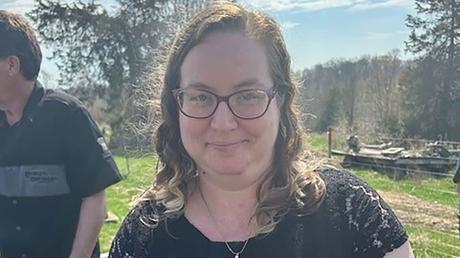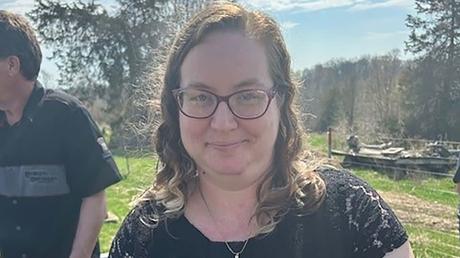Misty LaBean wondered all her life why her mother left her family when she was just a year old.
The disappearance of Connie Christensen from Wisconsin 40 years ago did not come out of the blue for the rest of her relatives: she had left before, running away when she was a teenager and even performing at a fair.
"After my own children were born, I thought, how could she have left me like that?" LaBean told CNN. "I would never do that to my children."
All her life, LaBean only heard whispers about her mother. The rest of her family was hurt and hesitant to even talk about Christensen, believing she had chosen to run away at the age of twenty.
But all the while, there was something else LaBean didn't know: strangers hundreds of miles away were looking for answers to the exact same mystery.
Their key to unlocking this - with her help - would be time, along with the inexorable progress of science. Eventually, those seeking the truth would connect. And an adult daughter would understand why her mother's departure "might not have been her choice."
Hunters in the forest - and in the laboratory
It was a cartoonist who first used a clay bust to try to recreate the face of remains found in east-central Indiana in December 1982, said Wayne County Coroner's Chief Deputy Coroner Lauren Ogden Office.
Hunters had found them near Martindale Creek, in a rural area used mainly for hunting and farming, she said. But flooding damaged the remains beyond recognition and ended up for storage at the University of Indianapolis.
But the coroner's office continued to try to determine their identities.
And in those years, science kept getting better. Within two generations, investigators had gone from relying on drawings to try to identify the missing and the fallen to looking for tiny, delicate threads in the evidence that could pinpoint exactly who someone was.
In fact, the technology had gotten so good that in 2021 the Wayne County Coroner's Office went back to evidence found near Martindale Creek to see if it could extract DNA to find out who the remains belonged to, Ogden told CNN.
The story continues
The first attempt failed: There wasn't enough genetic material to generate a useful DNA profile, she said.
They attempted a second DNA extraction.
Another failure.
Next, she explained, Ogden and her team attempted a DNA extraction from a bone in the foot.
A critical link, waiting to be found
Around the same time, someone in Christensen's family had become interested in genealogy and encouraged her relatives to submit DNA data to public resources that help people build family trees, Ogden said.
Hailed as a way to explore personal history and connect with previously unknown relatives, DNA matching is also used to link victims to criminals such as the Happy Face Killer, who murdered at least eight women. It helped lead police to the Golden State Killer, suspected of a dozen murders and more than fifty rapes.
Authorities in the Golden State case used the free genealogy and DNA database GEDmatch to match crime scene DNA to a pool of possible suspects created using DNA profiles or genealogy data from public services such as Ancestry - the kind that Christensen's relative had encouraged her family to use.
GEDmatch is also used by the DNA Doe Project, a nonprofit organization that uses genetic genealogy to identify anonymous remains.
Working with that group - and DNA from the foot bone of the Martindale Creek remains - the Wayne County Coroner's Office tried to create a potential family tree for the person the hunters found in 1982, Ogden said.
Within 24 hours, they had a strong lead, Lori Flowers of the DNA Doe Project told CNN.
The nonprofit had narrowed the collection of possible DNA links from GEDmatch to the Martindale Creek remains to the Christensen siblings, she said. As investigators sifted through family members' social media posts and obituaries, investigators noticed something: Connie Christensen had disappeared from her family's public records.
But they had yet to confirm it.
Ogden contacted the missing woman's child, LaBean.


"Because I was on the ground floor," Ogden recalled, "I was the one who called her daughter and said, 'I'm a total stranger, can I come... wipe your cheek?'
Reclaiming her own mother's identity
The match was her mother.
In addition to Christensen's identity, the coroner's office also shared a discovery the team made about how LaBean's mother died, Ogden said: a gunshot wound.
The grim detail set off a tangle of new questions: What was Christensen doing in Indiana? Who killed her? And why?
LaBean went to the spot near Martindale Creek where her mother's remains were found, she said, wondering how the killer got Christensen so far from the nearest bus line.
"In some ways, that makes me feel a little better," LaBean said of the real story of her mother's absence. "But it also makes me angry because I could have had the opportunity to get to know her, and someone took that opportunity away from me."
Perhaps publicity about the case will help her family find more answers, LaBean said.
But even without that, knowing what happened to Christensen released the pressure that had held her family so firmly in her memory - a gift to the child who had wondered for so long why she had been abandoned.
"The most important thing is that I have always loved animals," LaBean said. "And then I found out that she really liked cats. That's something I got from her."
LaBean also claimed the opal ring her mother wore when she died, a nod to her own childhood, when some of the first jewelry she cherished were opals, she said. The gold band with two diamonds and an opal hangs on a chain around the neck of the adult daughter - now a mother herself.
"We've really come full circle," Ogden said. "She's wearing the ring that was found there 40 years ago, and it's mind-boggling to think that your DNA could provide that closure."
Meanwhile, Christensen's remains were buried in April among her relatives, including her parents, her obituary said. "We were able to bring her family back to where her mother was found so they could leave flowers and have some peaceful moments," Ogden said.
"Some desires will remain unanswered, like how LaBean wished her mother could have done her hair before her first high school dance, like she reportedly did to her own sisters," she told CNN.
Yet the adult daughter - with her entire family - is now eager to bring back the lost young mother in an embrace that has multiplied over decades, as they finally mourn all they have truly lost.
"If Connie were still here with us, she would be surrounded by all of her nieces, nephews, great-nephews, aunts, uncles and many cousins from both sides of the family," her obituary said. "Connie would have been a wonderful mother to her only daughter, Misty, and her husband, Dan LaBean. She never had the chance to be a wonderful, loving grandmother."
CNN's Andy Rose contributed to this report.For more CNN news and newsletters, create an account at CNN.com
